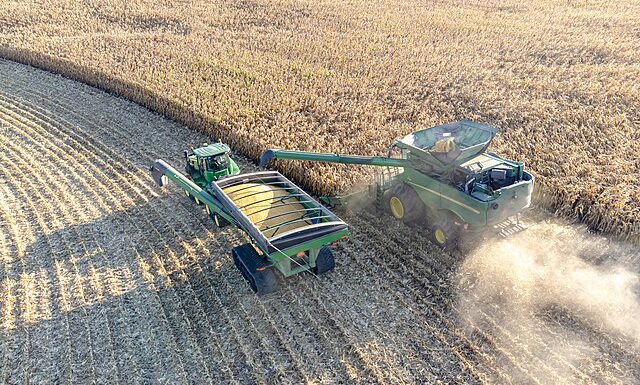Farmtok, an ecosystem of farming influencers on TikTok, has made agriculture cool. It has been sharing anything from aerial tours of farms to a few thrilling seconds of grain harvests.
There have been many influencers, some of them like Zoe Kent demonstrating through clever pesticide connections how “farming is for the girls.”
According to an AP News story on January 22, 2024, the influencer shows herself in work boots while loading corn into trucks. A moment later, the product is on the market with marketing information.
Other influencers, such as one dubbed “Lifted Imagery” shows previews of the harvest process with agricultural machinery.
For those who thought farming had nothing iconic in it, some users post complicated live farming tutorials with new farm machinery. Some posts show everything in the life of a plant from planting to harvest in just a few pastiches of images.
Enter Trump
But something is afoot that has stopped U.S.’ Farmtok influencers on their iconic beat. This is the temporary ban of TikTok in the U.S. on January 18, 2025.
Continuing a diplomatic tiff going back to Trump’s first administration, TikTok shut off its 170 million American users after a court order.
Following his January 20 inauguration, Trump has however said he will invoke an executive order to restore the popular platform.
Still, TikTok’s and Farmtok’s future in the U.S. depend on its Chinese ownership ceding 50% stakes to an American.
Other Farmtok Activities?
For now, tech farmers are turning their energies to connected channels such as Instagram to reach their audiences.
The only problem is that audiences have become less agreeable to agriculture and more attracted to entertainment.
“Farmtokers” are facing such challenges by adopting to new tech and reaching out on fellow farmers. This way, they provide fresh information on climate change and offer informed solutions on economic issues.
But a worrying discovery shows that most people that Farmtokers exchange information with on TikTok and Instagram are only fellow farmers. Neil Denton, a grain and soybean farmer in Kentucky boasts 33,000 TikTok followers and 80,000 on Instagram, all fellow producers.
Finally, as iconic as Farmtok gets, it is also facing a big challenge, namely misinformation. Some brands take advantage of climate debate to “greenwash” audiences in a bid to market their products. Indeed, brands’ surveys already show that social media farming has become a reality around the world, per the statistics below.
Social Media Farming Statistics
By January 2025, there were 5.2 billion social media users globally or around 64% of the world population, according to Priori Data. TikTok, to which Farmtok belongs, had 1 billion users. The top three platforms by numbers include Facebook, Youtube and Instagram. The most relevant branch close to agriculture, that of influencer marketing, had a worth estimate of $16.4 billion in 2022. Social commerce, on the other hand, had a sale value estimate of $492 billion back in 2022.
Which percentage of American farmers use social media?
A 2016 Farm Futures’ survey showed that 46% of American farmers used Facebook while 9% Twitter (now X). However, only 9% of the Facebook agriculturalists in the survey used the platform for agribusiness. This is even as only 4.5% of the 9% on Twitter accessed it for farming business.
How high are social media farmers in the UK?
A 2020 Hillsgreen’s Marketing to Farmers research found that 85% of farmers in the country use social media. This is a huge leap forward by 158% since a previous research in 2015 had found the number at 33%.
How high is agricultural social media penetration in Nigeria?
With Africa having some of the fastest internet growth rates worldwide, farming activities often fine-tune to social media. An Agrojournal 2024 study in a state in Nigeria, for example, found that 36% of farmers were using Facebook. This is even as 33% of the survey takers were using WhatsApp for mobile communication on agricultural matters.
